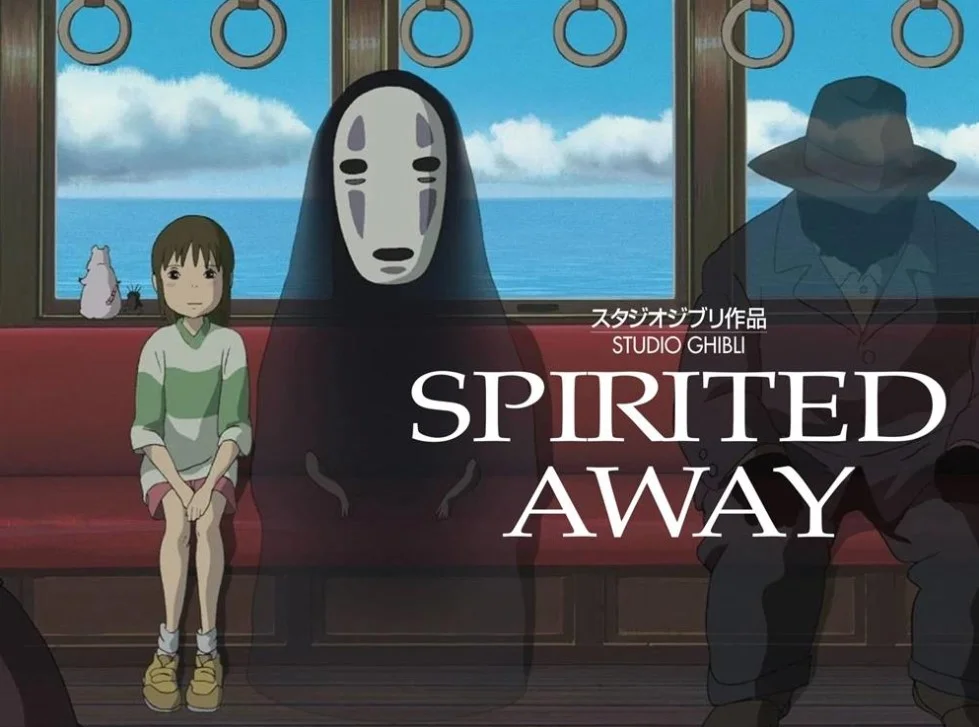Directed by Hayao Miyazaki, Spirited Away (also known as “Sen to Chihiro no Kamikakushi,” which translates to “Sen and Chihiro’s Spiriting Away”) revolves around a ten-year-old girl named Chihiro Ogino (portrayed by Rumi Hiiragi/Daveigh Chase). During a move to a new neighborhood, Chihiro’s father forgets to turn on Google maps, leading them to become lost in what appears to be an abandoned town. To their surprise, they discover that they have entered a fantastical world inhabited by monsters and spirits. Chihiro’s parents undergo a transformation into pigs after an ill-fated attempt at dining and dashing, leaving her alone and frightened. Her only ally in this strange world is a mysterious boy named Haku (played by Miyu Irino/Jason Marsden), and together they embark on a journey to reverse the enchantment and find a way back home.
When asked about my thoughts on Spirited Away, I often find myself saying “it’s an experience,” and this isn’t merely a casual expression. Describing the film in terms of visuals, music, characters, and the like feels insufficient because Spirited Away transcends such categorizations. But what does it truly mean when I label it as an “experience”?
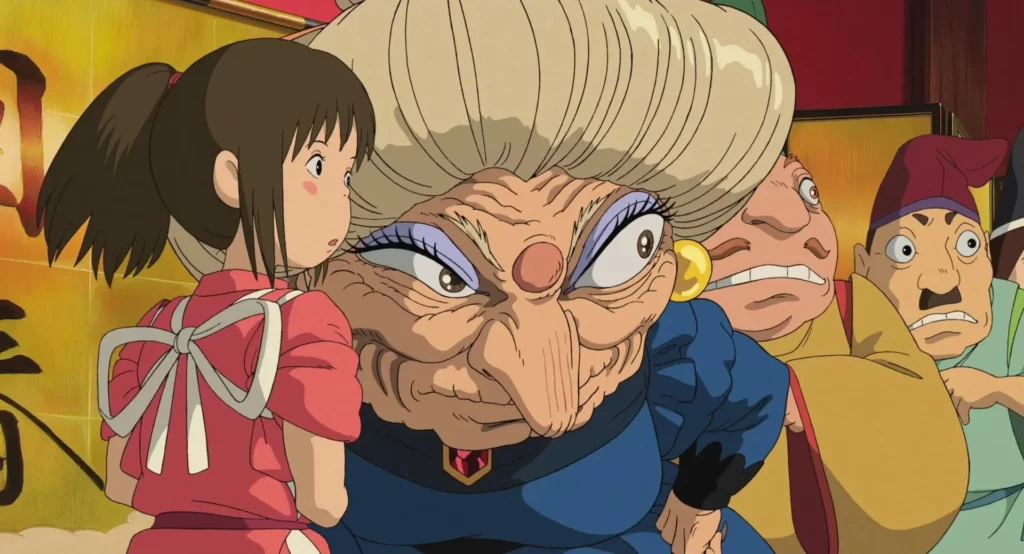
In a technical sense, all films offer experiences. They present a sequence of images and sounds that extend beyond the screen, enveloping the audience and drawing them into the film’s world, providing immersion for a duration of 2 to 3 hours, allowing viewers to empathize with the characters. Whether it involves shouting battle cries alongside the Avengers or suppressing a scream as Alien’s xenomorph prepares to inflict more damage than one is comfortable with, a movie immerses you in that particular encounter. However, the degree of immersion can vary significantly based on a film’s pacing, cinematography, craftsmanship, and performances. Visual appeal may lose significance if the audience struggles to connect with the characters, and a compelling story might lose its impact if the presentation is subpar.
Referring to a film as an “experience” specifically addresses how effectively the film achieves overall absorption. In the case of Spirited Away, every technical aspect contributes masterfully to this goal. While the film’s plot is relatively straightforward – Chihiro’s journey to return to the real world with her parents – it’s the presentation, as exemplified in the aforementioned scene, that elevates it beyond simplicity and genuinely immerses the audience in Chihiro’s emotional journey.
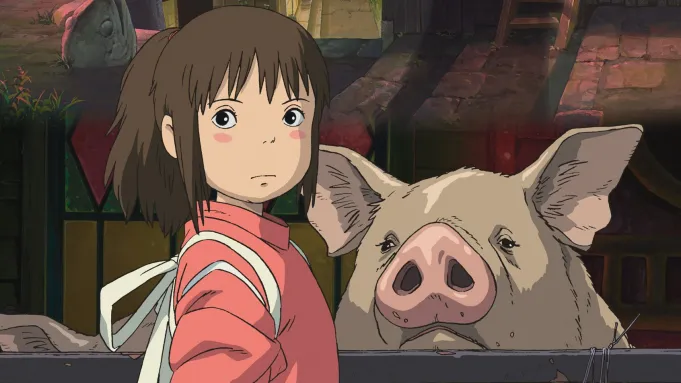
This is largely attributed to its exceptional artistry and animation. Expressing the nuances of animation through writing is challenging, but the movements exhibit a seamless flow that accentuates elements in accordance with the context. For example, when Chihiro displays a horrified expression, her hair protrudes outward resembling a hedgehog. Although these details may appear inconspicuous individually, they cumulatively contribute to enriching the film’s visual impact. Furthermore, the art design distinguishes itself through its ingenuity. The spirits and monsters in the film exude an otherworldly charm inspired by traditional Japanese Shinto culture. This imparts a mythical ambiance to the entire world, creating a sense that Chihiro is completely detached from the contemporary world.
The presentation of individual scenes also elevates their impact. As Chihiro discovers her parents transformed into pigs and dashes through the streets of this peculiar town, night descends, and its inhabitants start emerging. The overall color palette darkens, and despite the city, which seemed abandoned initially, gaining vitality with movement, the actual residents are depicted as shadowy figures—a remarkable contrast that emphasizes Chihiro’s sense of not belonging. The first time I witnessed that scene, it genuinely unsettled me because the visuals convincingly conveyed the horror experienced by a young girl stranded in a nightmarish wonderland, collapsed on the ground.

However, there’s another crucial aspect of the film’s impressive presentation that deserves equal attention, and that is its pacing. What distinguishes the pacing is the inclusion of deliberate, slower moments. Initially, one might not consider slow pacing a positive attribute. If a film lingers too much, boredom sets in. You start noticing that irritating popcorn kernel wedged between your teeth, and the need for a bathroom break becomes more pronounced. Yet, I believe that slower moments are precisely what a movie requires to draw the audience in completely. When every aspect of a film is geared towards incessantly propelling the plot forward, it is undeniably efficient. However, this approach also leaves minimal room for reflection, reducing the film’s warmth and making it feel more artificial.
In Spirited Away, there are instances where characters simply sit down and contemplate, sometimes in silence, absorbing the moment alongside the audience. For example, the day after Chihiro’s parents transform into pigs, she sits in a flower garden, sharing breakfast with Haku. Gradually, emotions from the previous day well up, and she sheds tears. Analyzing the scene, it boils down to a solid minute of eating and crying, which may seem superfluous. Yet, during that sequence, we ponder the situation from her perspective, contemplating the hopelessness she must be experiencing. It’s a moment dedicated not to advancing the plot but solely to her emotions. Such scenes enable us to genuinely empathize with her journey and become fully immersed in it.
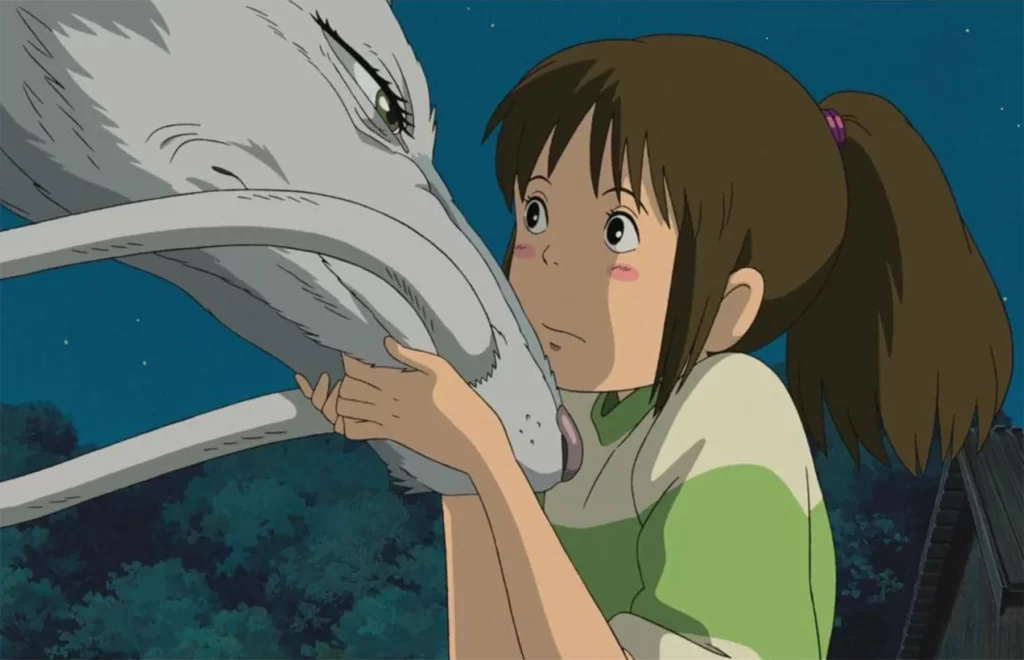
This is not to diminish the substance in the actual story. Spirited Away imparts poignant messages on various pertinent topics, addressing issues like toxic work culture leading to self-loss, the transition from adolescence to adulthood, the overwhelming nature of greed, and environmental pollution. These thematic layers provide additional depth to the film, akin to discovering there are ten more dolls inside the last layer of a matryoshka.
While certain themes, like the perils of material greed, might come across as somewhat clichéd, there’s a nuanced approach in Spirited Away that breathes freshness into the narrative. The primary “antagonist” in the film, Yubaba (Mari Natsuki/Suzanne Pleshette), is a witch with numerous employees bound by contracts in her bathhouse, including Chihiro. She embodies avarice, relentlessly pursuing more profits and viewing her staff merely as tools. Yubaba also symbolizes the unforgiving work system in society that drains individuals of their vitality and youth.

However, facets of her character go beyond monetary concerns. Despite her contracts verging on eternity, she acts as a just employer. When Chihiro seeks employment, Yubaba reluctantly grants her a position, even with a low opinion of her. As Chihiro proves to be a lucrative asset for the bathhouse, Yubaba congratulates and praises her in front of the entire staff. Additionally, she is portrayed as a genuinely loving, albeit excessively indulgent, mother. While she remains far from a virtuous person, her multi-dimensional portrayal prevents her from becoming a mere trope, lending authenticity to her character.
Among the prevalent themes, the most potent one is arguably the simultaneous existence and absence of personal growth. In conventional narratives, characters often undergo transformative journeys, addressing personal flaws, accepting others, or fortifying their wills. They evolve and change through the challenges they face, emerging as different individuals. Spirited Away seemingly sets up a similar character arc for Chihiro. Initially whiny, timid, and fearful, even of a steep flight of stairs (granted, it was exceptionally steep), she progressively becomes more assertive as the film unfolds. She takes independent actions, demonstrating increased maturity in her interactions with others.
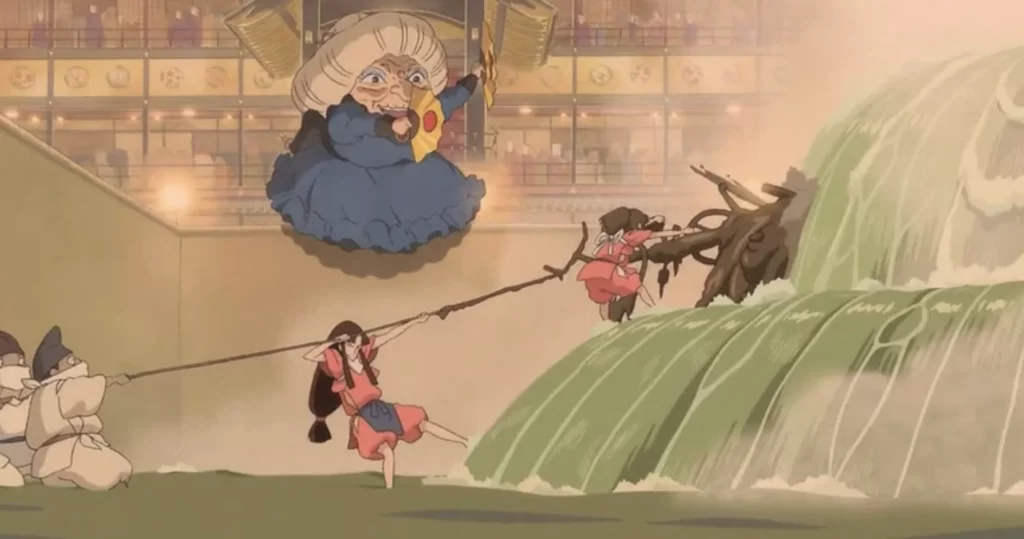
Typically, one would anticipate Chihiro’s journey to conclude on a note of personal development. However, as the Spirited Away film reaches its conclusion, keen observers may discern that Chihiro has regressed to her initial state. When she first entered the magical realm, she walked in while tightly clutching her mother for support. Strikingly, the same image is replicated as she exits. Contrary to expectations, she hasn’t become markedly more assertive; she doesn’t extricate her parents in a heroic manner. Despite navigating through a series of trials, she remains fundamentally a child and is likely to remain so for some time.
While this might strike some as unconventional, I find it to be both refreshing and realistically grounded. Growing up is a gradual process and doesn’t unfold in a single instant. While one may glean lessons about the world or oneself, a significant part of childhood innocence tends to persist. It’s this duality that contributes to the authenticity of a character. It’s not to dismiss the effectiveness of a character undergoing a complete transformation due to a singular event, often referred to as the Ebenezer Scrooge syndrome. However, in this instance, the nuanced approach adds depth.
Moreover, it’s crucial to note that Chihiro hasn’t completely relinquished the impact of her experiences. Despite losing the memories of her adventures in that fantastical realm, she retains the hairband received as a gift, and a momentary reflection reveals a subtle serenity about her. The growth stemming from her trials is still embedded within, albeit unrecognized at that moment. Such latent maturity is a shared facet of the human experience, requiring time for full realization.
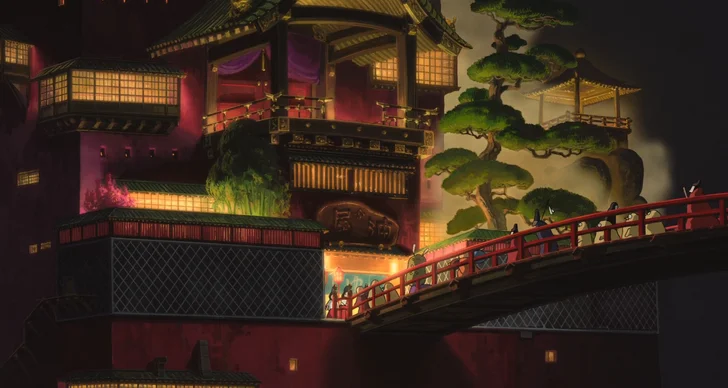
What I admire most about the Spirited Away film is how seamlessly it incorporates these profound themes into the narrative. At times, a film can become overly enthusiastic about conveying its messages to the extent that the actual storyline becomes an afterthought. Profound themes should function akin to the culinary techniques in a restaurant dish – an enhancement that elevates the Spirited Away film rather than overpowering it. A great film Spirited Away, grounded in its fundamental merits, naturally invites curiosity and discussion about its underlying messages.
In the context of Spirited Away, the themes are present, but they are not forcefully thrust in our faces. When certain themes do emerge, they manifest through the natural actions of the characters. For instance, when Chihiro’s parents transform into pigs, it is a consequence of their decision to eat at an apparently deserted restaurant without permission, assuming they can settle the bill upon their return. This incident serves as a commentary on consumerism permeating modern society, transforming individuals into metaphorical pigs of the economy. However, it resonates just as powerfully when viewed as what it is – Chihiro’s parents falling victim to the mysteries of this magical world, leaving Chihiro frightened and alone.
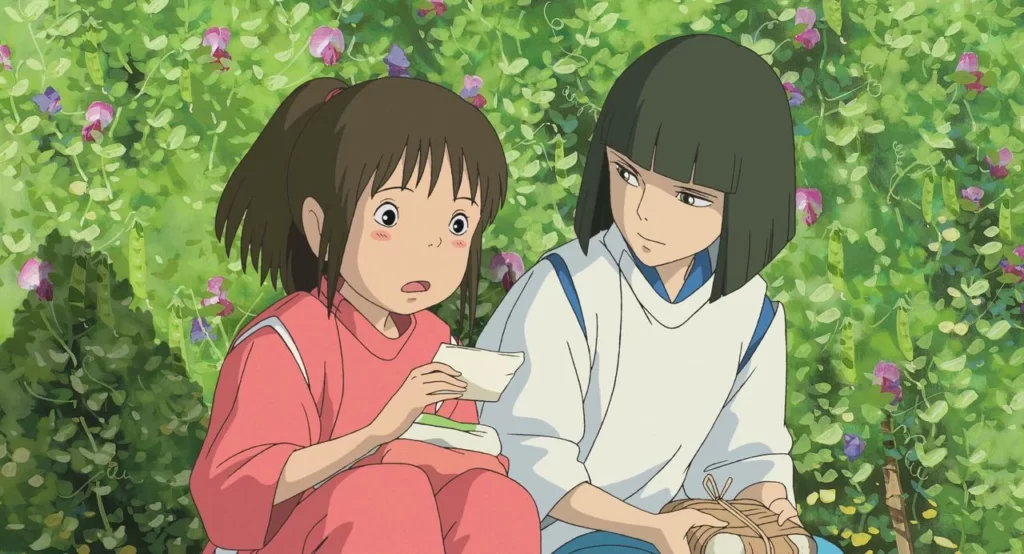
Consequently, what the Spirited Away film ultimately delivers is a profound impact through its beautifully crafted narrative alone. A casual viewing leaves me satisfied, and it provides food for thought, enticing me to revisit and delve deeper into its layers. Spirited Away unfolds the tale of a young girl lost and found in a fantastical world, evolving childhood into an adventure without feeling contrived.
This is why I confidently label this Spirited Away film as an experience. Spirited Away has consistently been acclaimed as Miyazaki’s magnum opus, and the reasons are apparent. Every element of the film exudes creativity and depth, contributing to its immersive quality no matter how many times I revisit it. While I acknowledge that there may not be an objectively perfect film, Spirited Away has always been – and will continue to be – my perfect film.
Also Read: Your Name (Kimi no Na wa) Review
